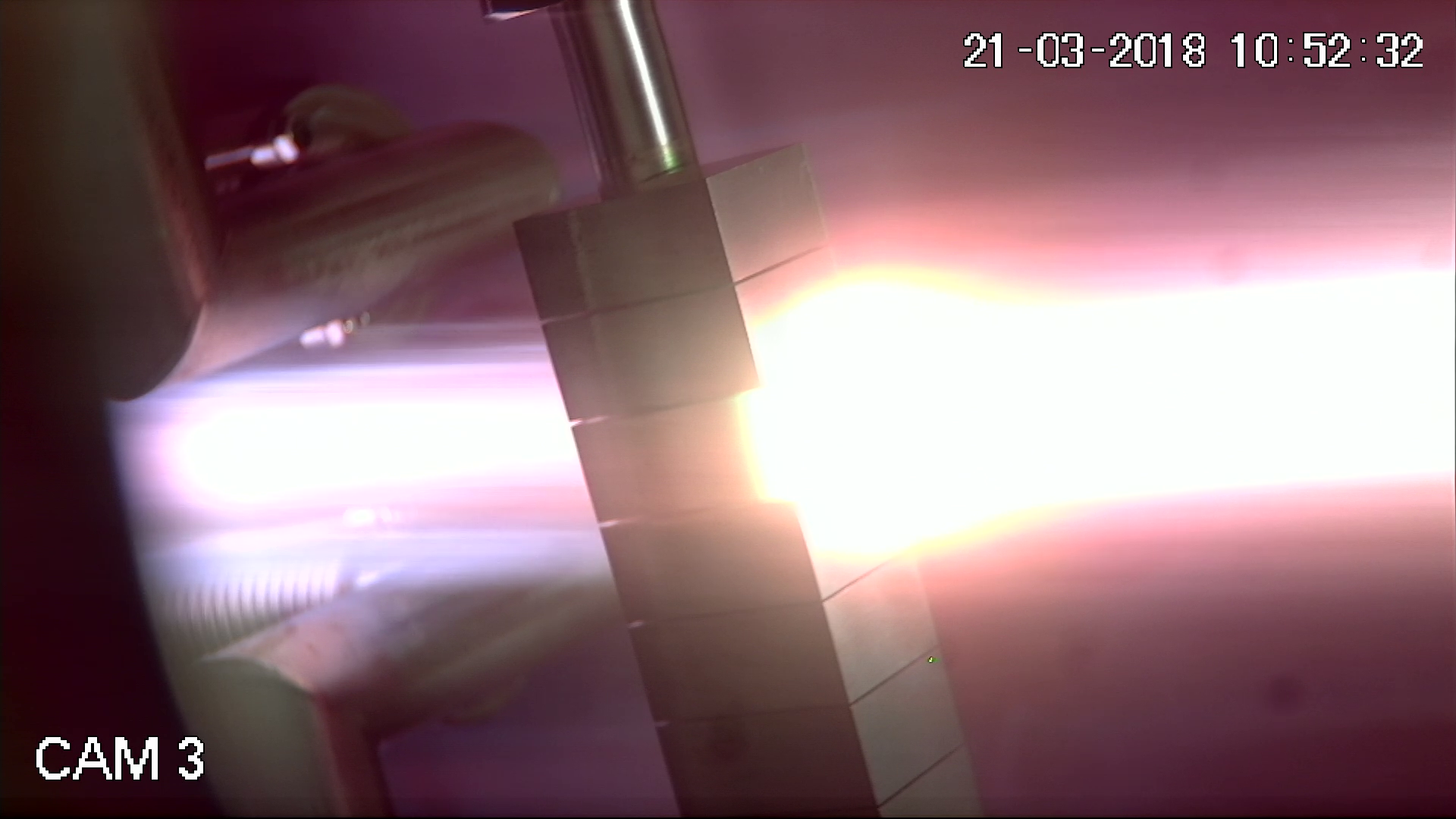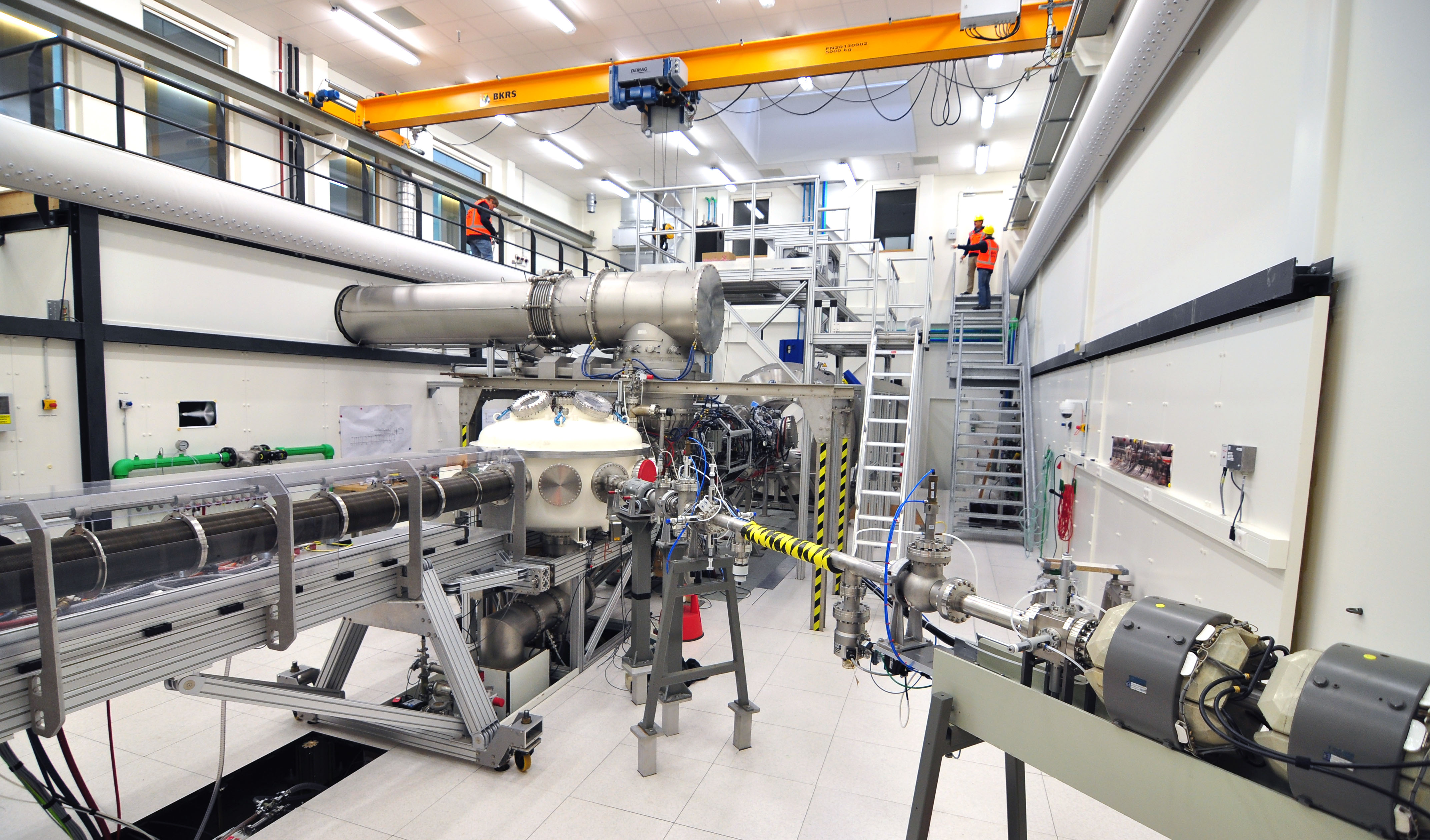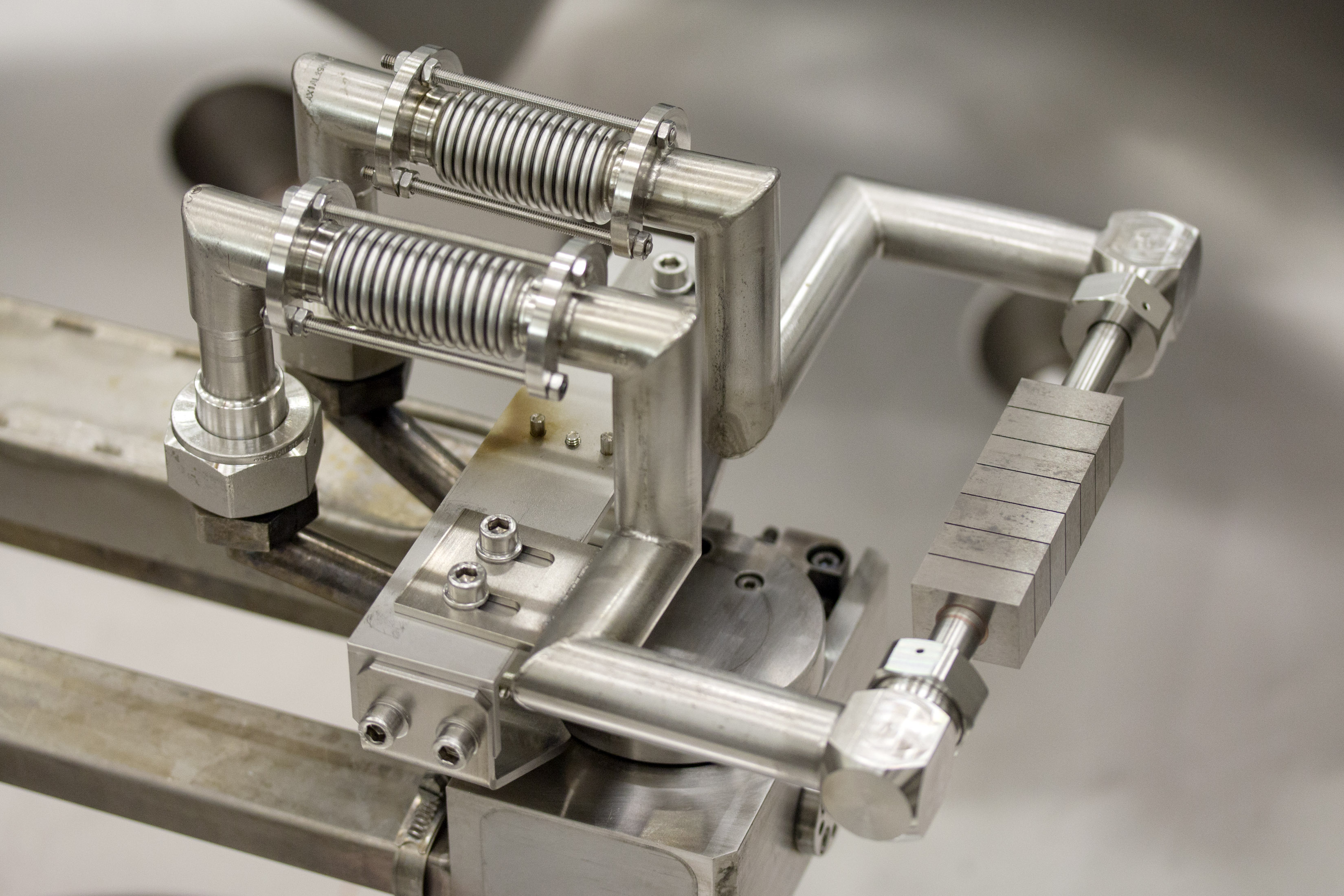An important part of the future fusion reactor ITER can withstand at least a year of full power operations, write researchers at DIFFER and ITER in Physica Scripta. The team exposed pieces of ITER's tungsten reactor wall to almost 20 hours of intense plasma bombardment in Magnum-PSI, the world's only laboratory facility capable of reaching plasma conditions expected at the ITER wall.
The result of the unique series of experiments is as positive as it is boring. Both the heat and the particle bombardment at the ITER wall are comparable to those at the surface at the sun. In their Magnum-PSI facility, DIFFER researchers exposed a block of tungsten to the conditions expected in the ITER fusion reactor, to see how well the wall material handles such harsh conditions. The team saw almost no unexpected effects.
Head of the DIFFER research team Tom Morgan is happy with the outcome: "Luckily, there were no unpleasant surprises." Joining him in the experiments was Greg De Temmerman from the ITER international organization: "Long term exposure of a material to this much plasma is a feat in and of itself. I was pleasantly surprised that the Magnum-PSI experiments went so smoothly."

credit: DIFFER
Good news
To test how well tungsten can handle ITER-like plasma conditions, the researchers performed a series of increasingly harsh experiments. They tested a mock-up of the divertor, the tungsten exhaust wall of ITER. In the ultimate experiment, the tungsten faced a 20 hour exposure to an extra high intensity plasma of helium and deuterium: the equivalent of a year of full power experiments in the ITER fusion reactor.
The tests broke the world record for fluence (total exposure to the plasma) by a factor of 100, after which the researchers investigated any changes to the material properties together with a number of German research groups.
One piece of good news is the discovery that the tungsten block hardly absorbs any deuterium, one part of the deuterium-tritium fuel mix of ITER. In terms of absorption into tungsten, Deuterium behaves very similarly to the rare and expensive Tritium gas. Morgan: "You don't want to lose Tritium from your reaction because it's getting caught in your tungsten wall."

No big surprises
Another important aspect of tungsten's behavior is recrystallisation, which makes the material less sturdy. Says De Temmerman: "On the basis of our models we expected some recrystallisation of tungsten and that is also what we saw in the experiments. No surprise there." The tests also didn't show signs of cracking, which can be a pre-cursor to component failure.
One process the researchers did uncover was their tungsten turning black when the exposure to Helium caused a nanostructure to grow at the surface. This was unexpected, because models had predicted that this fuzz would only start developing at higher ion energies. De Temmerman is not worried: "Fuzz has advantages as well, it's porous and reduces erosion. I don't expect any problems, but we'll investigate this in more detail."

Improving models
At ITER, Greg De Temmerman will use the experimental results to improve various models. "Work like this is an iterative process", he explains: "You test the models with experiments, and you feed the results back into the models. And although the models for other fusion reactors like ITER's planned successor DEMO are different, these results and the insights we're developing will be interesting to them as well."
Follow-up experiments are planned for when the labs and facilities open again after the corona-epidemic. The first experiments have already been completed with laser induced transients which mimic Edge Localized Modes, a type of energy outburst from the artificial sun that is a fusion reactor. After that, the team will see what happens at higher surface temperatures and will add elements like nitrogen or neon to the mix, elements that will also be present in ITER. "This research is an ongoing process", says De Temmerman: "We're always learning something new."
More information
ITER monoblock performance under lifetime loading conditions in Magnum-PSI, Physica Scripta
Imagery and video (please credit DIFFER on use)
Go to the News page.